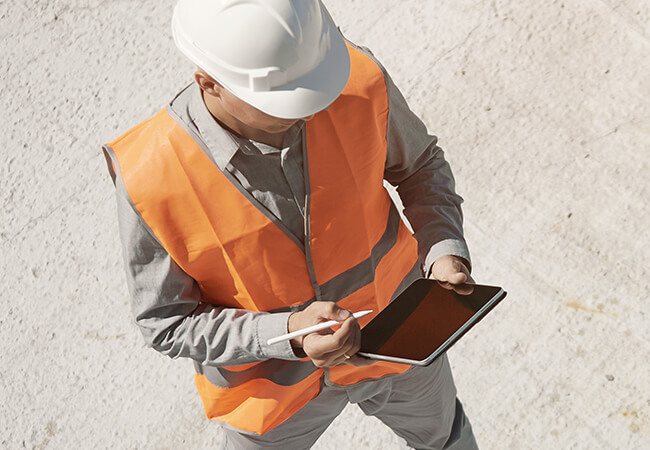Hydro excavation and non destructive digging
Reveal Underground Services have a fleet of hydro excavation trucks built to suit all jobs and job sites. Hydro excavation is the most reliable, cost-effective, and efficient method for all your non-destructive digging needs.
Underground Service Locating
Don’t dig blind. The personal and financial risk is too great, especially considering how easy it is to assess, locate and map out all the underground utilities in and around the jobsite. Whether you’re working on a commercial or private property, our underground locating services can help ensure you dig and drill safely.
Ground Penetrating Radar (GPR)
GPR technology uses antennae to send electromagnetic radiation waves into the ground, which can detect any utilities, items, voids, or groundwater beneath the ground or in concrete.
A subsurface radar system is a transmission-based remote sensing method that uses radio waves to image the earth’s subsurface. This technique works by sending a wave back to a receiving antenna, which generates readable data and allows you to determine where subsurface elements are located.
Vac truck and excavator hire GOld Coast and Brisbane
You can hire Reveal Underground Services’ vacuum excavation trucks and excavators for all your landscaping and excavation needs.
If you would like more information about our services, or hiring a vac truck, please contact us today.
Frequently Asked Questions
Reveal Underground Services offers a range of services focused on underground infrastructure and construction. These include Hydro Vacuum Excavation, which uses water pressure to safely uncover buried utilities; Ground Penetrating Radar (GPR) for detecting subsurface structures; Underground Utility Location using methods like GPR and electromagnetic detection; Utility Mapping and surveying for precise planning; and Concrete Scanning with GPR to locate objects in concrete structures. These services enhance construction safety and efficiency by reducing the potential risks of harming existing underground infrastructure.
Utility mapping, also known as utility mapping and surveying, is the process of accurately mapping and documenting the locations of underground utilities such as water pipes, gas lines, electrical cables, and communication wires. By visually representing the exact positions, depths, and orientations of these assets, utility mapping helps prevent accidental damage during construction or excavation, ensures worker safety, aids in efficient urban planning and project design, and assists emergency response teams in addressing utility-related incidents promptly and effectively. This practice is essential for minimising disruptions, ensuring regulatory compliance, and enhancing the overall safety and functionality of underground infrastructure.
Yes, there is a significant risk of damaging underground utilities during construction and excavation due to factors such as inaccurate information, lack of awareness, improper digging techniques, inadequate planning, unmarked utilities, varying depths, natural shifting, and communication failures. Mitigating this risk necessitates comprehensive utility mapping, non-destructive methods like ground-penetrating radar, educating workers, employing safe digging practices, and effective communication with utility companies and stakeholders. Such measures are crucial to prevent service disruptions, ensure worker safety, and avoid financial and legal liabilities associated with utility damage.
